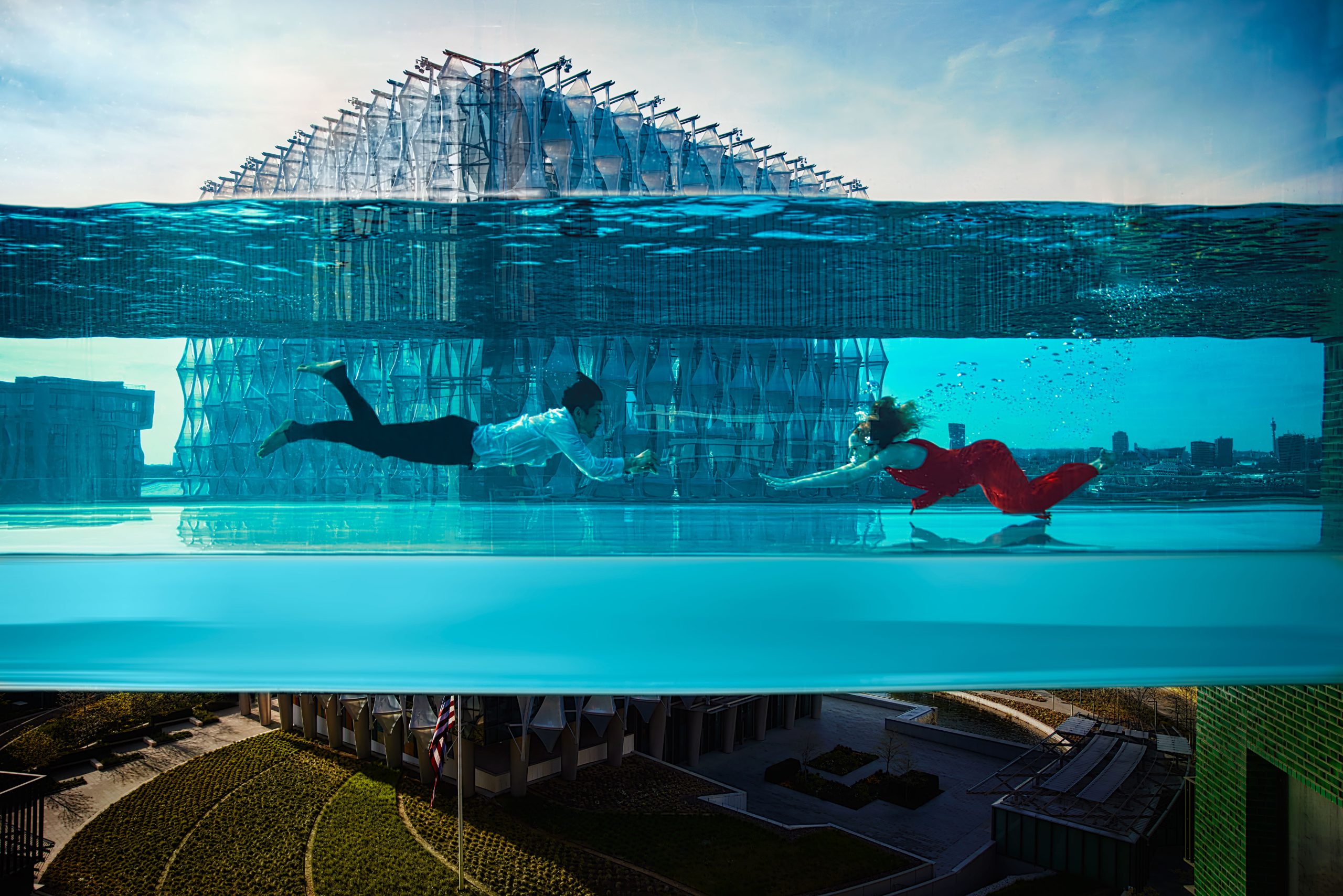
Services
The purpose of the pool tank structure is to support and contain the water within whilst preventing water loss or ingress.
The pool surround must also be designed to prevent water loss or ingress. This can be achieved by adopting a method of construction which is inherently watertight or derives water retention from an applied finish. Sport England guidance states that a waterproof membrane should generally not be used between the concrete structure and the tiling, as they can be the cause of subsequent failure if there is shocking of the pool tank, through emptying or heating.
The guidance assumes that the concrete structure is liquid retaining. It is to be noted that many successful pool tanks have been constructed using waterproof membrane technology.
All swimming pools must be emptied for maintenance at some point. If the ground water table is high, pools of lightweight construction and pools that rely on an applied water retaining lining can be at risk of water ingress, liner detachment or floatation. Pools constructed when ground water levels are low are particularly susceptible.
Where there is the risk of a high-water table the structural engineer will need to address the risk of floatation; approaches include anchoring the pool down by mass or tied into other structure, and/or hydrostatic relief valves.
Transparent acrylic panels are increasingly being used in pool tank construction, from small windows to complete walls of pools. Our project, The Sky Pool at Embassy Gardens, London is a fantastic ground-breaking example of this method of construction.
Where a pool tank is in the ground in a back garden, the risk from leakage is generally low. However, if the pool tank is in an elevated location with accommodation below, then the potential risks are much higher. In such situations a risk reduction strategy should be addressed, to minimise the risk. There are many things that can be considered, including a box in box approach, whereby an outer box is provided to contain and pass to drain any leakage that may occur from the inner pool tank.
Swimming pool tanks and balance tanks can be formed with water retaining reinforced concrete to BS EN 1992-3 Type 2; this method of construction is inherently watertight.
An alternative is to use non-water retaining reinforced concrete to BS EN 1991-1-1 with an applied waterproofing membrane. Reinforced concrete is normally specified by the structural engineer. The concrete is either formed using shutters or is sprayed using say Gunnite or Shotcrete.
There are generally two stainless steel options.
The first option is for an all welded stainless steel tank where the steel remains exposed to the bathers, so hence a grey metallic finish, normally brush finished; this is often sold as being a most hygienic solution as there will not be any cracks or crevices that can harbour bugs; this type of tank is widely used on the continent.
The second option is where the stainless-steel tank is primarily there to provide the structure, and the waterproofing is provided by a loose laid liner (one supplier has the liner bonded to the walls). Key benefits of stainless-steel tanks are offsite build, accuracy, speed of construction and lower embodied carbon.
The following documents are relevant to the design of a pool tank and the surrounds: